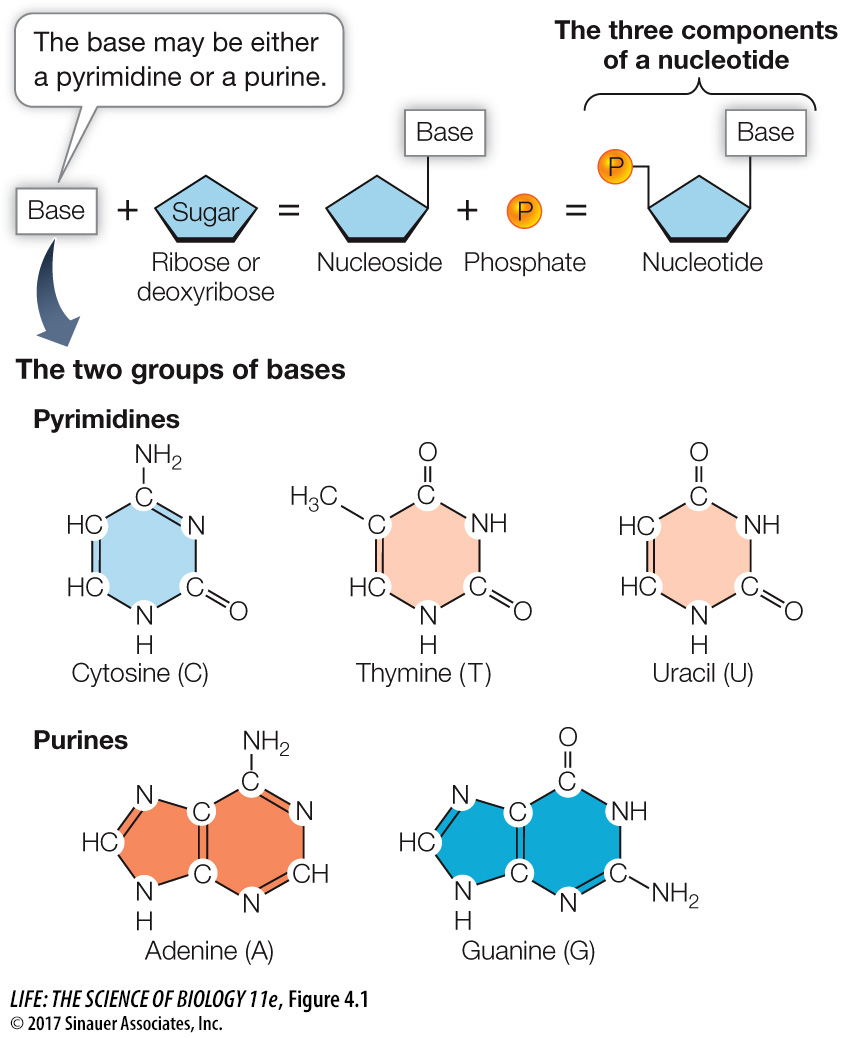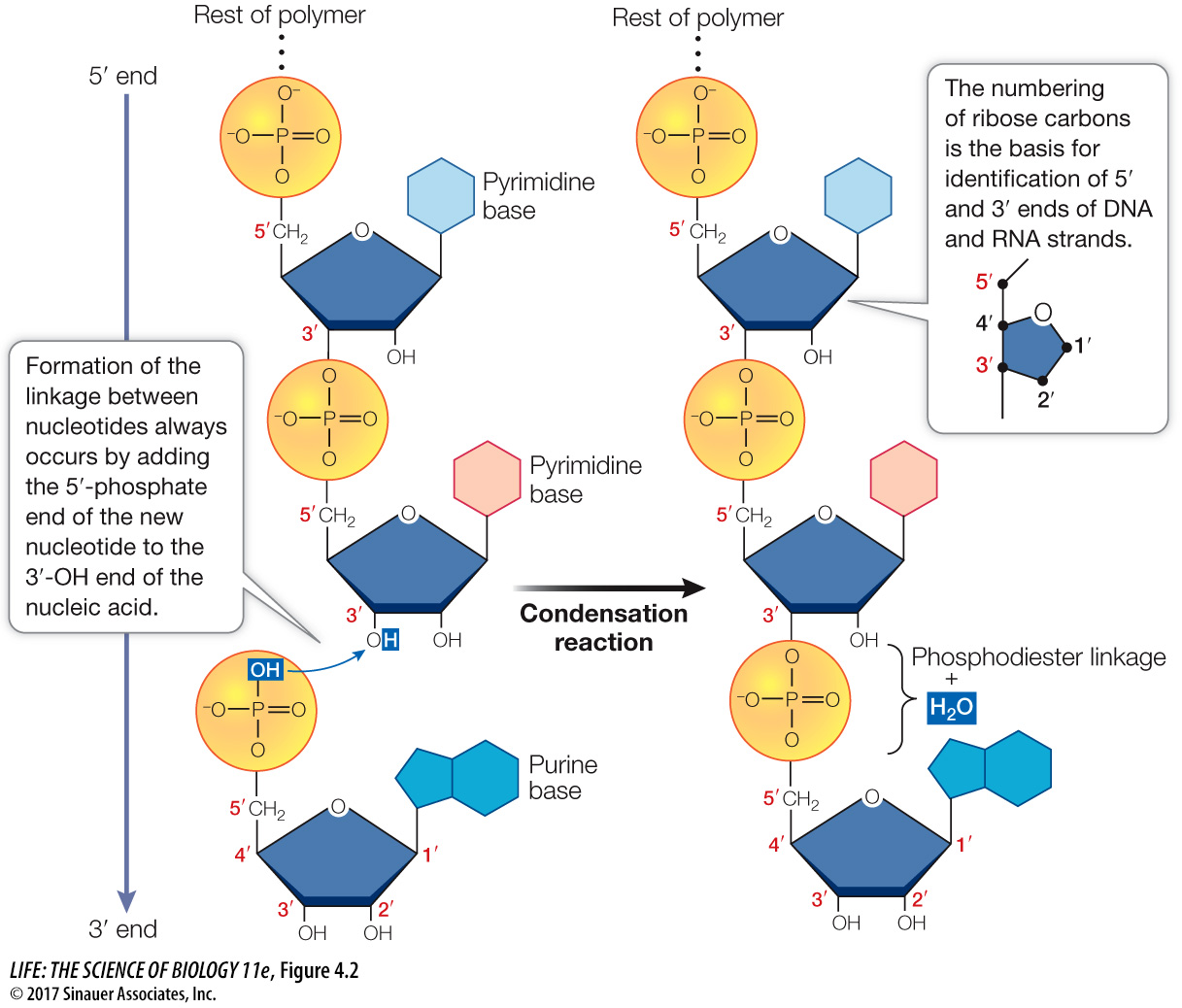Nucleic acids are informational macromolecules
Nucleic acids are polymers specialized for the storage, transmission, and use of genetic information. There are two types of nucleic acids: DNA (deoxyribonucleic acid) and RNA (ribonucleic acid). Although you have heard of it in countless pronouncements as a metaphor for the essence of something (“It’s in her DNA”), DNA is first and foremost a macromolecule. Its structure encodes hereditary information and passes it from generation to generation. Through RNA intermediates, the information encoded in DNA specifies the amino acid sequences of proteins and controls the expression (that is, the synthesis) of other RNAs. In Chapter 11 you will learn how, during cell division and reproduction, information is preserved from the DNA of the parental cell when both the cell and its DNA are duplicated to form two new daughter cells. Chapter 13 will describe how information flows from DNA to RNA to the proteins that ultimately carry out many of life’s functions. Here we focus on the chemistry of the nucleic acids, revealing how their structures reflect their functions.
Nucleic acids are polymers composed of monomers called nucleotides. A nucleotide has three components: a nitrogen-

Activity 4.1 Nucleic Acid Building Blocks
Animation 4.1 Nucleic Acids
The bases of the nucleic acids take one of two chemical forms: a six-
A nucleic acid forms when nucleotide monomers are added to an existing chain one at a time. The pentose sugar in the last nucleotide of the existing chain and the phosphate on the new nucleotide undergo a condensation reaction (meaning H2O is removed; see Figure 3.4), and the resulting bond is called a phosphodiester linkage (Figure 4.2). The phosphate on the incoming nucleotide is attached to the 5′ carbon atom of its sugar, and the linkage occurs between it and the 3′ carbon on the last sugar of the existing chain. Because each nucleotide is added to the 3′ carbon of the last sugar, nucleic acids are said to elongate in the 5′-to-

As with carbohydrates (see Key Concept 3.3), nucleic acids can range in size. Oligonucleotides are relatively short, with about 20 nucleotide monomers, whereas polynucleotides can be much longer.
Oligonucleotides include RNA molecules that function as “primers” to begin the duplication of DNA; RNA molecules that regulate the expression of genes; and synthetic DNA molecules used for amplifying and analyzing other, longer nucleotide sequences.
Polynucleotides, more commonly referred to as nucleic acids, include DNA and some RNA. Polynucleotides can be very long, and indeed are the longest polymers in the living world. Some DNA molecules in humans contain hundreds of millions of nucleotides.